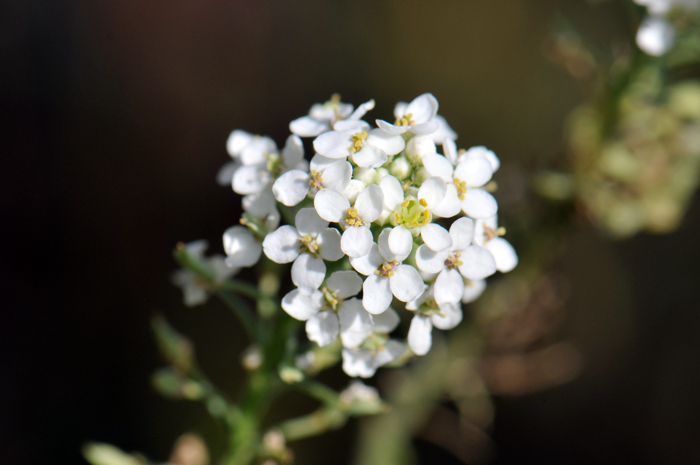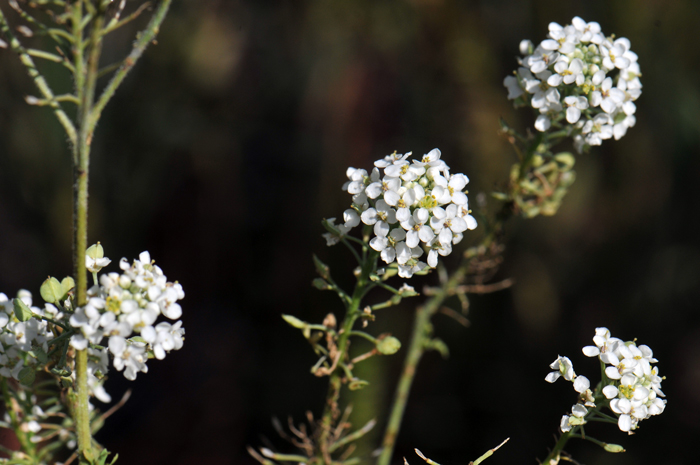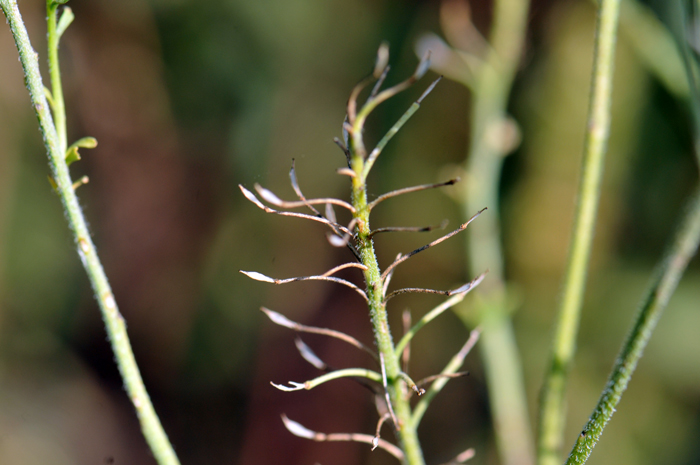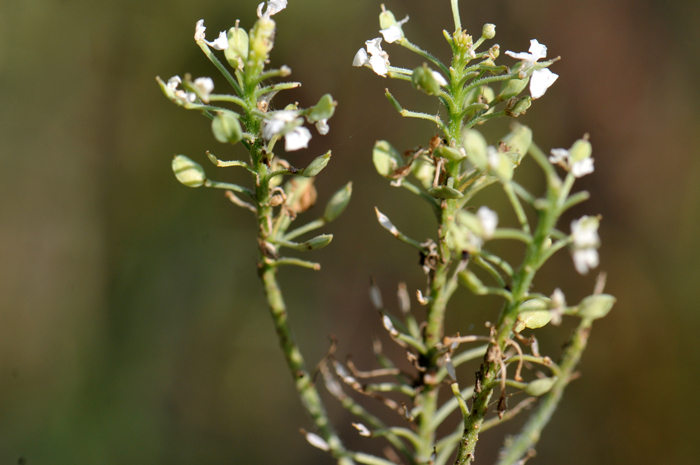Lepidium alyssoides, Mesa Pepperwort




Scientific Name: Lepidium alyssoides
Common Name: Mesa Pepperwort
Also Called: Southern Pepperweed
Family: Brassicaceae, Mustard Family
Synonyms: (Lepidium montanum )
Status: Native
Duration: Biennial or perennial
Size: 4 to 22 inches (1-5.8 dm)
Growth Form: Forb/herb or subshrub; woody base often above ground; stems few to several from base, branched throughout; plants erect to ascending; plants without hairs (glabrous) or minutely puberulent.
Leaves: Green; having both basal and stem or cauline leaves; basal leaves not always in a rosette and not early to wither; stem (cauline) leaves arranged alternately along stem, stems leaves without stalk or sessile, lower blade leaves pinnately lobed, upper leaves linear, leaf edges or margins not toothed (entire).
Flower Color: White, flowers small, flowers in dense unbranched flowering stem (racemes), raceme stems on pedicel, ascending in flower and horizontal in fruit; petals and sepals in 4's, cross formation typical of Cruciferae family flowers; fruits are a round, flattened seed pod called a silique (note: a silique is a type of fruit with the length being more than three times the width: when the length is less than three times the width of the dried fruit it is referred to as a silicle); seeds ovate.
Flowering Season: April or May to July through September
Elevation: 4,000 to 9,000 feet (1,200-2,800 m)
Habitat Preferences: Sandstone outcroppings, dry flats, washes, canyons, river bottoms, gravelly roadsides, sand dunes, prairies, grasslands, pinyon-juniper communities and sagebrush communities.
Recorded Range: Mesa Pepperwort is found primarily in the southwestern United States in AZ, CO, UT, NM, TX. It is also native to northern and northeastern Mexico.
North America & US County Distribution Map for Lepidium alyssoides.
U.S. Weed Information: No information available.
Invasive/Noxious Weed Information: No information available
Wetland Indicator: No information available.
Threatened/Endangered Information: No information available.
The genus Lepidium was published by Carl Linnaeus in 1753.
In the Southwestern United States: Arizona has 12 species of genus, California has 22 species, Nevada and New Mexico each have 13 species, Texas has 11 species, Utah has 18 species. All data approximate and subject to revision.
There are sub-species in Lepidium alyssoides;
Lepidium alyssoides var. alyssoides, Mesa Pepperwort (AZ, CO, NM, NV, TX, UT, WI);
Lepidium alyssoides var. angustifolium, Mesa Pepperwort (NM, TX);
Lepidium alyssoides var. eastwoodiae, Mesa Pepperwort (CO, NM,UT);
Lepidium alyssoides var. junceum, Mesa Pepperwort (AZ, UT).
The species epithet "alyssoides" (alysso'ides:) means "like genus Alyssum" as the little white flowers so closely resemble "Alyssum" species, also members of the Brassicaceae family.

